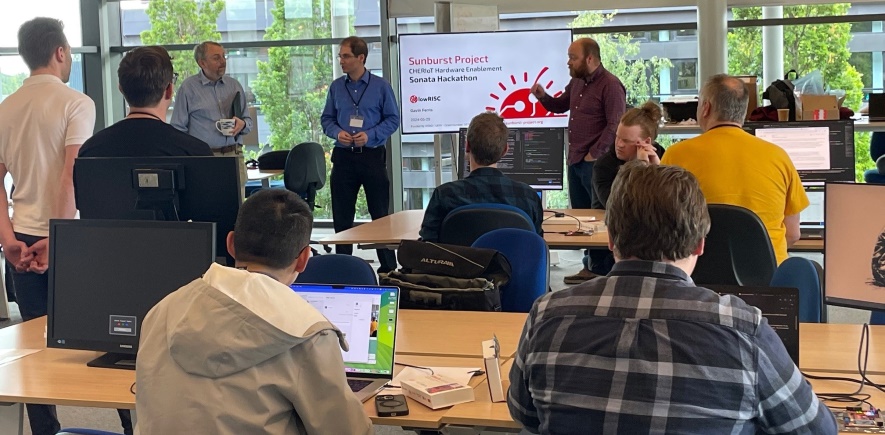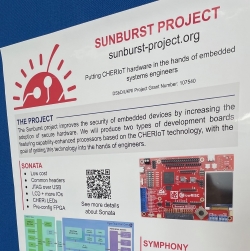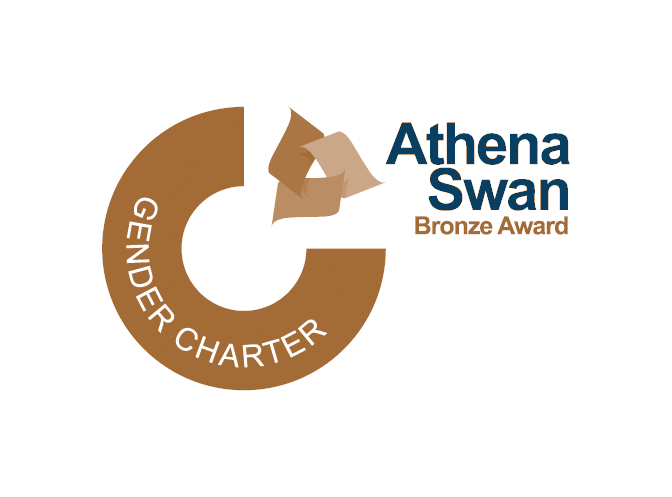
Submitted by Rachel Gardner on Mon, 17/06/2024 - 17:23
A hackathon held here in the Department gave participants the chance to explore the development of secure applications for Internet-of-Things (IoT) devices using a novel secure architecture.
Attendees enjoyed a day of coding, creativity and collaboration when they came to the event. It was hosted here by lowRISC and the Sunburst Project and involved our CHERI (Capability Hardware Enhanced RISC Instructions) project – a long-running research project revisiting fundamental design choices in computer hardware and software with the aim of dramatically improving system security.
 The aim of the day was to enable attendees to explore the development of secure applications for IoT devices using novel CHERIoT hardware+software secure architecture implemented on the Sonata board developed as part of lowRISC's Sunburst Project.
The aim of the day was to enable attendees to explore the development of secure applications for IoT devices using novel CHERIoT hardware+software secure architecture implemented on the Sonata board developed as part of lowRISC's Sunburst Project.
The event was supported by the UK government's Digital Security by Design programme.
The Teams Behind the Hackathon
The Sunburst Project focuses on enhancing security within the embedded and operational technology (OpTe) sectors. Its primary goal is to promote the adoption of efficient, 32-bit CHERI, through the use of Microsoft’s open-source CHERIoT technology. This integrates CHERI capabilities into lowRISC’s Ibex® RISC-V microcontroller architecture, with minimal overhead. Developed as part of the project, Sonata is an affordable FPGA-based prototyping board that enables experimentation and evaluation of CHERIoT-Ibex designs.
lowRISC is a UK-based nonprofit focused on developing open-source silicon designs. It provides a home for collaborative engineering to create and maintain high quality IP such as OpenTitan — the world’s first commercial-grade open-source silicon root of trust (RoT), and Sunburst, which aims to put secure-by-design hardware into the hands of embedded systems engineers.
lowRISC was founded in this Department in 2014 by Dr Gavin Ferris, Alex Bradbury and Prof Robert Mullins.
A Day at the Hackathon
The Hackathon kicked off with a keynote presentation from lowRISC’s CEO, Gavin Ferris, who discussed what to expect out of the day, Sunburst and lowRISC’s history and roadmap, and the newly-released system image for Sonata, which enables the use of CHERIoT-RTOS making software development on the boards possible.
The remainder of the morning consisted of structured lab sessions that taught the basics of developing CHERIoT software on Sonata.
The afternoon was made up of freeform hacking sessions, giving attendees the opportunity to explore their own ideas that they would like to see enabled through using Sonata. Some of the suggestions for utilizing the boards included CHERIoT exceptions, working with peripherals, compartmentalizing and software revoking.
During both the lab and freeform sessions, attendees had an informative and positive experience. "It was a really informative introduction into compartmentalisation with CHERIoT and a great opportunity to try it out on actual hardware," said Gary Winter, a software engineer.
Another attendee, Adam Finney, CEO of 3Bian stated, "lowRISC gave us a thorough update on the Sonata board and the NIX environment they set up was really easy to use. At the meetings and workshops, there were always experts around to answer our questions, and they were very approachable. After the meeting, we were able to load our custom software onto the board and start testing right away."
This Hackathon served as an educational opportunity for the community to further spread knowledge of working with CHERIoT and the Sonata platform, along with the security benefits it can provide. In addition, given the open source nature of the project, this event provided a platform to share ideas and insights, including thoughts about how the Sonata platform could be improved.
lowRISC staff, who played a pivotal role in getting the board design to the current supported state, were in attendance and provided assistance where needed. And overall, the community was enthusiastic about the event , says John Thomson, Project Manager at lowRISC. "Given that the low-cost Sonata board has only existed for a short time, it was good to see an enthusiastic community of around 20 engineers from different types of organisations wanting to spend a day learning how to use the boards to explore CHERIoT and the security by design advantages it offers," he said.
lowRISC is organising a similar event in Halifax, Canada alongside CHES 2024 (hosted by lowRISC’s subsidiary NewAE) in September to further spread this learning opportunity to North America.
Here in the Department we sustain active research across the breadth of computer science and encourage the development of new technologies and applications. We were very pleased to host this event here and are glad it proved to be such a useful and enjoyable day for participants working on the development and use of new security technologies.

